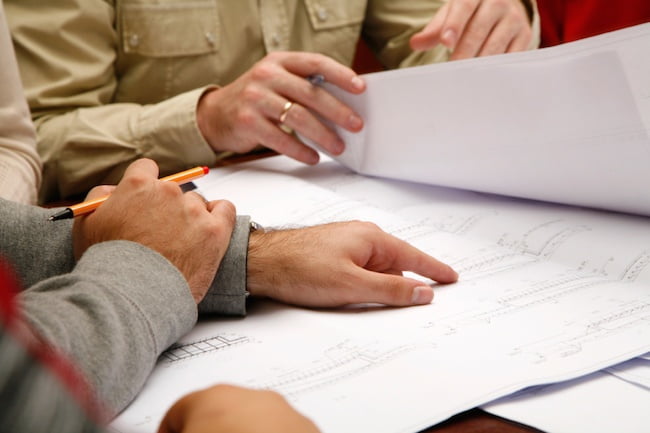Planning Tips for Enclosure Design & Cooling

When designing an industrial enclosure, it is important to plan ahead to include the cooling requirements. Taking these into consideration during the design phase will ensure that, once operational, the electrical equipment inside the enclosure will be protected from excess heat, as well as other environmental factors that could damage the components or reduce their efficiency.
The following tips will help in planning an enclosure and cooling system design:
1. Determine maximum allowable temperature
Designers must research the maximum air temperature tolerance for each component in the enclosure, and plan the enclosure’s cooling system so that the interior never exceeds the lowest maximum allowable temperature.
For example, a touch screen human-machine interface (HMI) may work well in temperatures as high as 140 °F, while Variable Frequency Drives (VFDs) typically are derated at temperatures over 104 °F.
The maximum allowable operating temperature data should be available from the component manufacturers.
2. Determine total heat load inside the enclosure
Electrical components, such as VFDs and controllers, give off heat as a result of internal inefficiencies during operation. The total heat load generated inside the enclosure is a combination of the heat produced by each individual component, which can typically be derived from the manufacturer’s data sheet.
3. Consider heat transfer and convection
In addition to the heat from the electrical components themselves, the temperature inside the enclosure may also be increased by insolation from the sun or direct heat from nearby industrial sources, such as ovens or furnaces.
Heat transfer through the enclosure walls may be positive or negative, depending on the ambient temperature versus the interior temperature. The amount of heat transferred will depend on the surface area of the enclosure, as well as the difference between the interior and exterior temperatures (ΔT). The larger the surface area, the more heat will be dissipated through the enclosure walls. If the interior is hotter than the exterior, heat will tend to flow through the walls to the outside, and the difference may be considered a negative ΔT.
The layout of the enclosure can also affect cooling requirements if little room is left between components for convection to occur and hotspots are created that trap heat and prevent it from rising to escape through the vents.
4. Determine the NEMA rating for the enclosure
The National Electrical Manufacturers Association (NEMA) has categorized electrical enclosures depending on the type of environment in which they operate. The different NEMA ratings are based on relative exposure to the following environmental factors:
- Location indoors or outdoors
- Humidity
- Wind, ice, and other weather
- Splashing liquids
- Corrosive vapors
- Heavy dust, explosive environments, or flying debris
Once the correct NEMA type has been determined, the enclosure cooling system can be designed.
5. Select and size the proper enclosure cooling system
Enclosures that fall under NEMA categories 1 and 3R can be sufficiently cooled with filtered fans, which blow air from the ambient environment through a filter and directly over the electrical components. The flow of air accelerates the natural convection of heat away from the components and removes it through vents at the top of the enclosure.
NEMA categories 12, 4, and 4X must be fully protected from the environment, and therefore require closed-loop cooling systems which keep the electrical equipment completely separated from the ambient air. If the ambient air temperature never exceeds the maximum allowable enclosure air temperature for the components, an enclosure air-to-air exchanger may be effective. But in locations where the ambient temperature surpasses the enclosure air temperature allowed for the components, an enclosure air conditioner will be required.
The size of the enclosure cooling system will be determined by type of system used, the total heat load, the maximum ambient temperature, the surface area of the enclosure, and the maximum allowable temperature of the components.
For more help in enclosure design and cooling, contact the experts at Thermal Edge.

